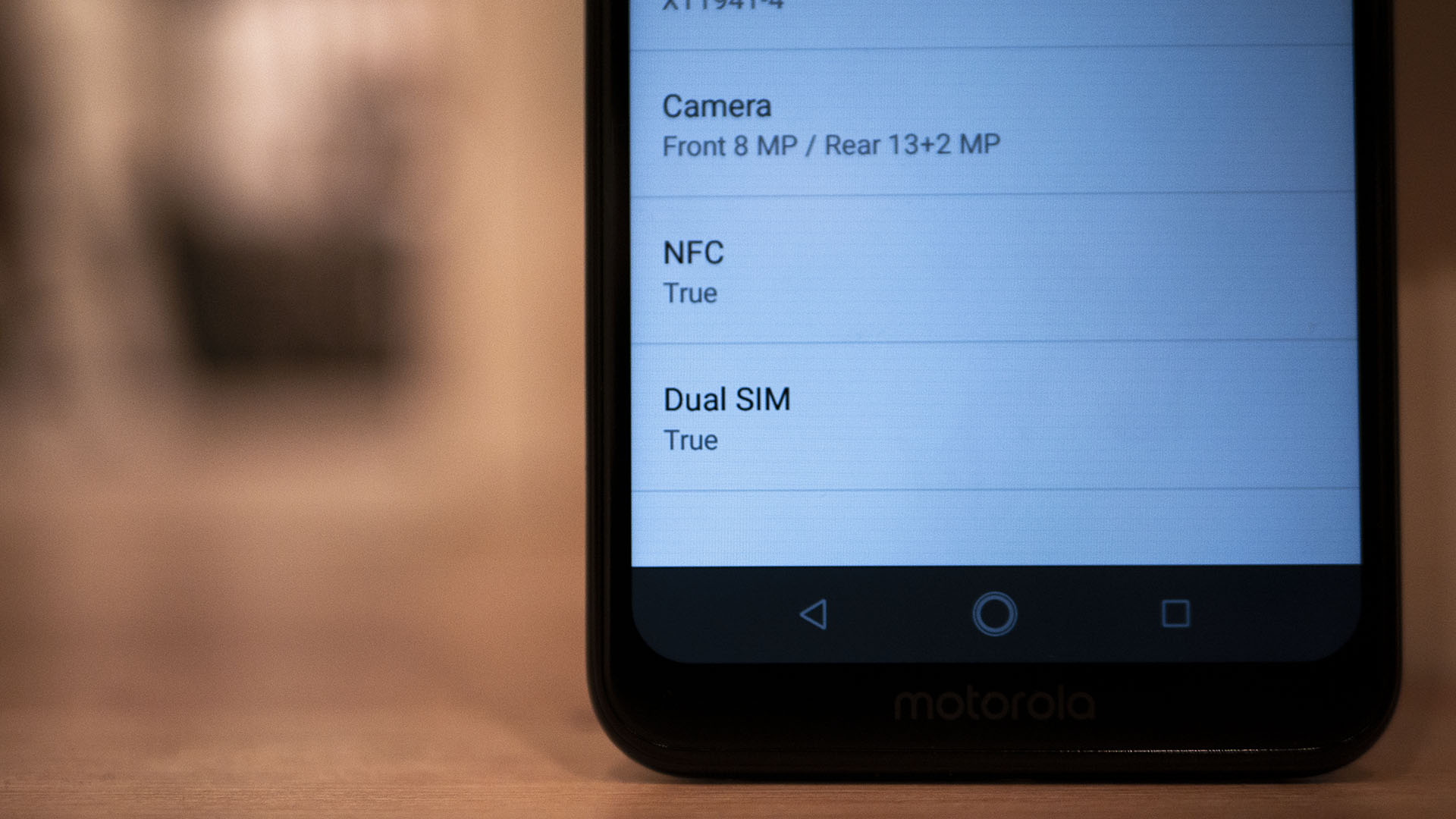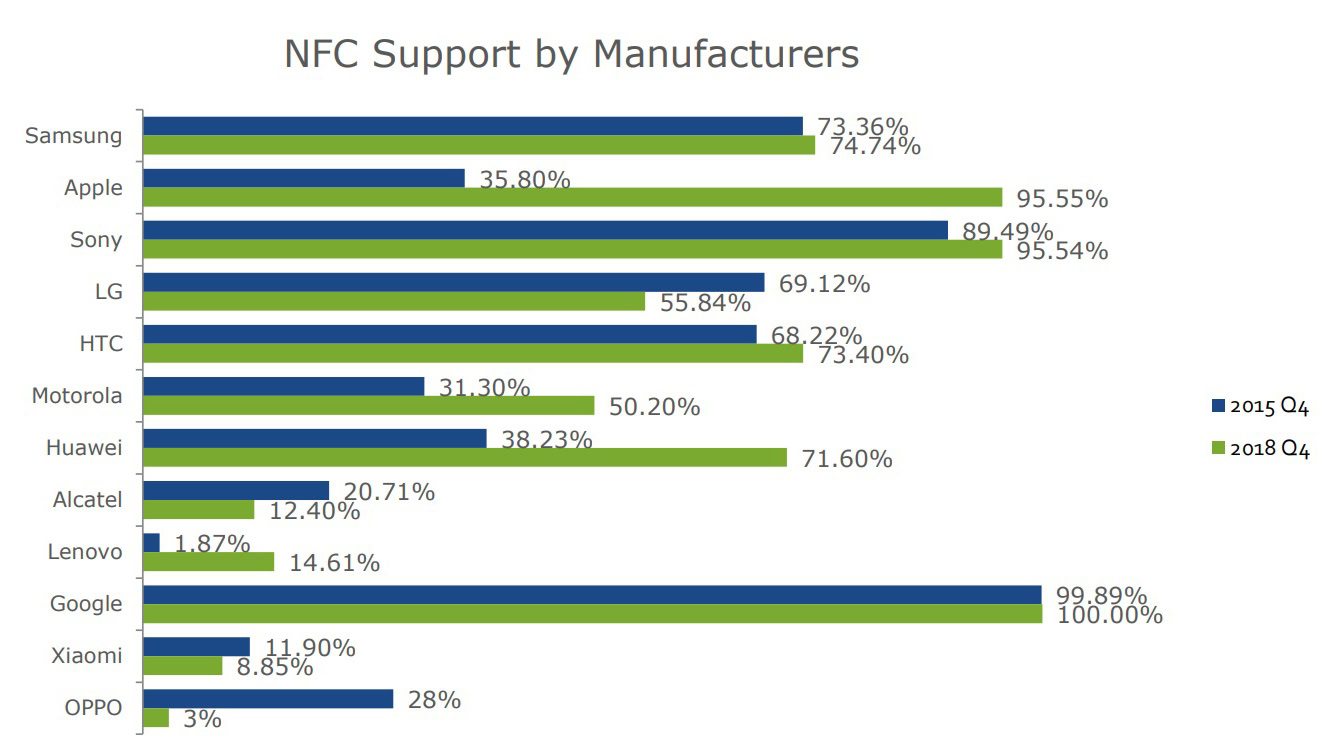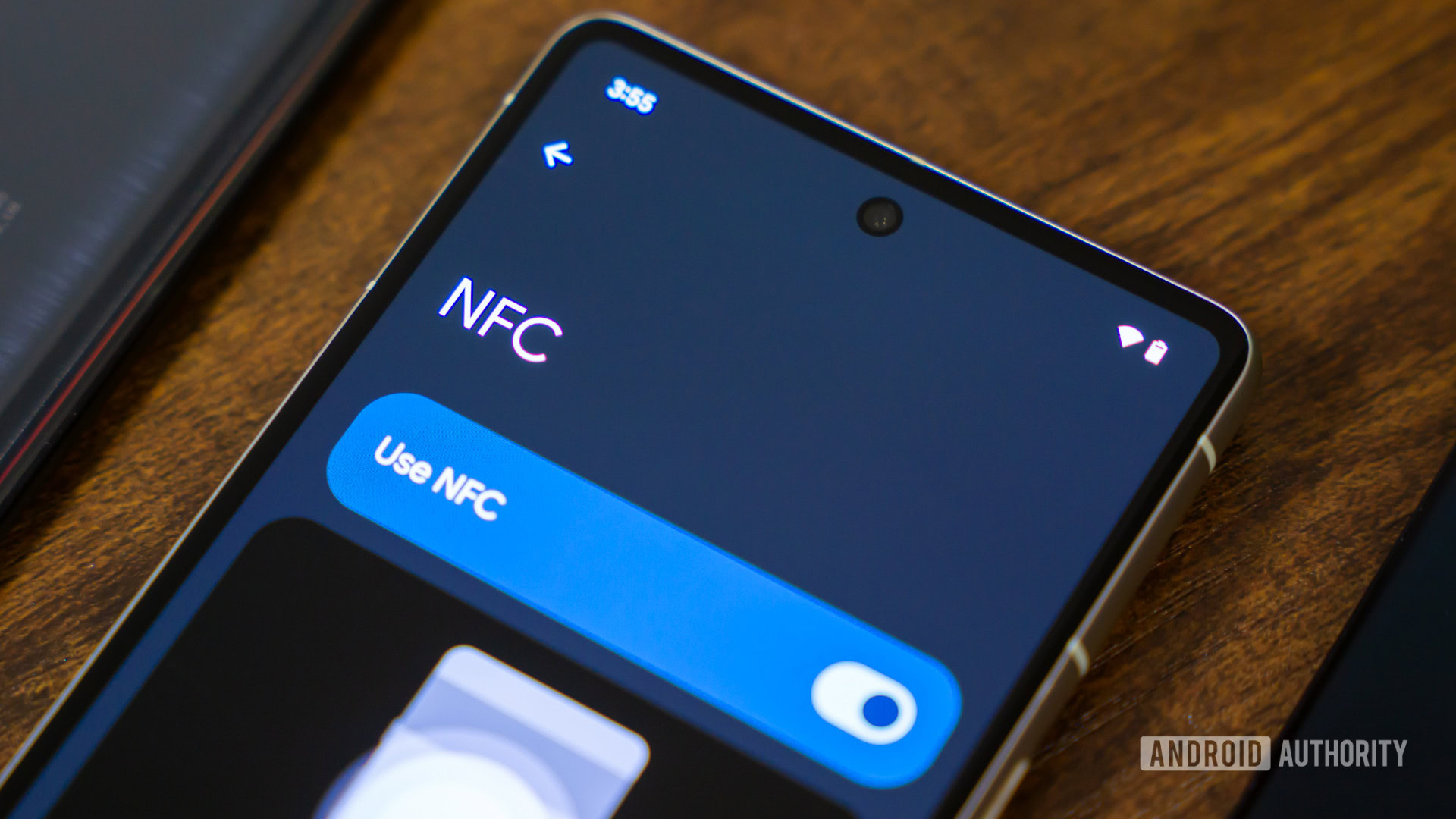Affiliate links on Android Authority may earn us a commission. Learn more.
For some reason, these 4 smartphone OEMs have less NFC support now than in 2015
Published onFebruary 13, 2019

- NFC support is a feature that almost every flagship phone offers.
- However, four major device manufacturers have notably decreased NFC support in their phones since late 2015.
- LG, Xiaomi, Alcatel, and OPPO seem to be placing less importance on NFC tech.
A near field communication (NFC) chip is a simple-but-powerful tool inside most smartphones. Using NFC technology, smartphones can process mobile payments, easily communicate with other devices, and make setting up a new device — such as a router or Bluetooth peripheral — incredibly easy.
Since NFC chips are small, cheap, and give you these incredible features, you’d think including them in a smartphone would be a no-brainer. However, according to the most recent Mobile Overview Report from ScientiaMobile, four leading smartphone manufacturers have actually reduced support for NFC chips in smartphones since 2015. This is very curious since most other manufacturers are increasing support.
The four OEMs that have reduced support for NFC are Xiaomi, LG, Alcatel, and Oppo. Check out the chart below for reference:

The chart makes it clear that almost all major smartphone OEMs are increasing support for NFC, including Apple, Samsung, Sony, Motorola, and Huawei. Google now ships 100 percent of its phones with NFC support (which isn’t too surprising considering how few devices Google releases).
According to the chart, though, LG only supports NFC on a little more than half of its devices, Alcatel a little more than 12 percent, Xiaomi a little less than nine percent, and OPPO unbelievably only supports the technology on three percent of its devices.

All of those percentages are markedly less than those companies’ 2015 percentages.
Why would a company not include NFC chips in its smartphones? In the cases of OPPO, Alcatel, and Xiaomi, the most likely explanation is the number of incredibly cheap devices these companies push out each year. Some of those cheaper devices won’t feature NFC, and that brings down their averages.
Another likely explanation for those three companies are the global markets they focus on, namely China, India, and other developing markets. NFC chips might not be as important to consumers in those locations, so the companies choose to leave them out.
However, why LG has reduced NFC support is anyone’s guess. Many of LG’s phones are high-end and almost all of them hit the U.S. and European markets. Maybe the fact that LG is releasing fewer phones than it did in 2015 is skewing its average a bit?
What do you think? Would you buy a phone if there was no NFC chip support inside? Let us know in the comments.